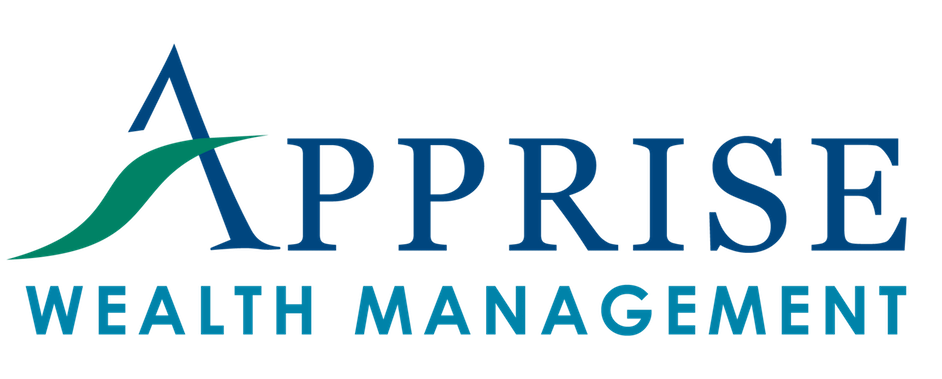It’s hard to believe we’re halfway through 2021’s fourth quarter. The clock is ticking on the 2021 tax year. This week I’m going to share some strategies investors should have on their radar screen as the year winds down. While I’m sharing some year-end planning strategies, you should consider these as elements in a multi-year planning process.
Why? Tax planning, in general, should always be done keeping multiple years in mind. What you do this year matters. Anything you do this year you may not be able to do next year. Sometimes, if you miss the window this year, you will have another chance next year. Other times, it might be better to wait until next year to do something.
In other words, think about how your situation may be changing from one year to the next. For example, if you plan to retire this year, next year’s income might be a lot lower than this year’s. That can – probably should – drive some of your decisions. If you sold a business this year, or plan to sell one next year, that should play a role in your planning as well.
On the other hand, if you were out of work for part of this year and are now back on your feet, next year’s earnings could be a lot higher. You want to consider that as well.
We have additional complications this year. Politicians are discussing potential changes to the tax law. We don’t know for sure what changes will result. Remember the Tax Cut and Jobs Act of 2017? It became law on December 2nd. We haven’t even reached that date yet. Something could still happen before year-end.
Here’s the bottom line. Keep the big picture in mind. Consider how your situation might change from one year to the next. That should factor into your decision-making process. Making decisions that only consider the short term can be costly.
On to the tax and financial planning tips.
1 Tax-Loss Harvesting:
We can start with some low-hanging fruit. Not every investment you make will work in your favor. If you invest with a long-term approach, you may not have many losers left. But you should try to understand as best as you can where your portfolio sits right now in terms of gains and losses. If you have some losses, use them to offset some of your gains. Maybe you haven’t recognized any gains. If so, you can still claim up to $3,000 of losses and get a tax benefit for them on this year’s return. You can carry any excess losses forward – forever. They do not expire.
Year-end is also a good time to revisit your asset allocation. If anything has gotten out of whack, now can be a good time to rebalance your accounts. You can also use any losses that result to offset some of the gains and reduce your tax cost for the year.
You should also consider where you sit in the capital gains brackets. Most often we fall into the 15% bracket, but not always. If your income is really low, you might be in a 0% capital gains position. You also want to know the breakpoints as you move into the 15% and 20% brackets. Also, remember that the rate could increase to 25% based on some of the legislative proposals. You also want to know about the 3.8% net investment income tax that’s out there.
2. If Possible, Increase Retirement Contributions to the Max
Workplace Accounts. Make sure that you increase contributions to your workplace retirement plan to take full advantage of any employer match. If possible, consider taking advantage of the maximum deferral for 401(k), 403(b), and 457 accounts, too. This year that amount is $19,500 – it increases to $20,500 next year. Those 50 and older can defer an additional catch-up amount of $6,500. For SIMPLE IRAs, the deferral remains $13,500; the catch-up is $3,000.
Traditional IRAs. You can also max out your contributions to a traditional IRA. With the passing of the SECURE Act, the maximum age to make contributions was repealed – as long as you still have earned income. You also want to review the modified adjusted gross income limits (MAGI) for contributions. The maximum annual contribution amount to either a traditional or a Roth IRA remains $6,000 with a $1,000 catch-up available to those who are 50 and older.
Consider a Backdoor Roth IRA. This series of transactions allows you to make a non-deductible contribution to an IRA and then immediately convert the amount to a Roth IRA. Note that if you have a rollover IRA account already, the backdoor Roth conversion can have a tax cost. The latest congressional proposal would eliminate this technique, so this could be your last chance to do it. If you want to complete a backdoor Roth conversion for 2021, be sure to complete it by year-end. If you would like some help determining whether a Backdoor Roth IRA makes sense for you, please schedule a free call.
3. Review Flexible Spending Accounts (FSA) and Health Savings Accounts (HSA).
If you have money in a flex spending account, remember that it’s a “use it, or lose it” account. The IRS allows employers to extend the grace period for unused FSAs for up to 12 months in 2021.
If you have a high-deductible health plan, consider maximizing contributions to your HSA. In 2021, the maximum contribution for an individual HSA is $3,600. The maximum for a family HSA is $7,200. If you’re 55 or older, you can contribute an additional $1,000. Please note that if both members of a couple are over 55 and each wants to contribute the additional amount, they should each open their own HSA. Company plans typically limit family contributions to $8,200.
4. Required Minimum Distribution (RMD) Planning.
Remember that RMDs were paused in 2020. You must take them in 2021. If you’re over age 72, be sure to take your RMD this year. If you miss them, there’s a 50% penalty. You have until December 31 to take this year’s RMD.
If you have an Inherited IRA that dates to before 2020, you must take an RMD this year. In most cases, if you inherited an IRA in 2020 or later, you don’t have to take an RMD this year. You have 10 years to distribute the full account balance. You want to understand your likely income now and in the future, to determine if you can potentially minimize the tax cost of such distributions.
5. Optimize Your Charitable Contributions.
Qualified Charitable Contributions (QCDs). If you’re at least 70 ½, QCDs can help you minimize your taxable income. A QCD can be part of your RMD, but it doesn’t have to be. A QCD is a direct-distribution from your IRA to a charity. The QCD does not get reported as part of income. While you won’t get a deduction for it, not reporting it as income provides a greater benefit. You don’t have to worry about claiming an itemized deduction for the amount. The income doesn’t get reported at all. This technique can also help you manage any income-based adjustments to your Medicare premiums as well.
Cash Contributions for Non-Itemizers. If you don’t itemize your deductions, you can still deduct up to $600 of cash contributions to qualifying charities in 2021. This provision was part of the CARES Act in 2020. The Taxpayer Certainty and Disaster Relief Act of 2020 generally extended this provision through the end of 2021.
Bunching Charitable Contributions. Many taxpayers can no longer itemize their deductions. We now have limitations on our deductions of state and local income taxes as well as real estate taxes. We can only deduct a total of $10,000 for these amounts. If you refinanced your home to take advantage of the low-rate environment, you likely have lowered the amount of mortgage interest you can deduct as well. This year, the standard deduction increased to $25,100. It increases by $1,350 if you are at least 65. If both members of a couple are at least 65, the standard deduction for 2021 is $27,800.
Let’s see how bunching deductions can work. Assume we have a married couple who are both less than 65 years old. They have paid more than $10,000 in state income and real estate taxes. This deduction gets capped at $10,000. They also paid $12,000 of mortgage interest. That’s a total of $22,000. Let’s also assume that they make annual charitable contributions of $5,000. That would give them $27,000 of itemized deductions this year. The first $3,100 of their charitable contributions takes up the rest of their standard deduction amount. They only get an additional tax benefit of $1,900 this year.
Let’s consider an alternative. What if they could make a $15,000 contribution this year – even better if they can donate appreciated stock (see below)? That would give them $37,000 of itemized deductions. That’s an excess of $11,900 over the standard deduction amount. They make no charitable contributions for the next two years. They get the standard deduction. Their total deductions for the three-year period would be $37,000 + $25,100 + $25,100 – $87,100 in total. That compares to $27,000 each year if they didn’t bunch deductions – $81,000 in total. (Note: This example does not consider annual inflation adjustments to the standard deduction.)
Donate Appreciated Stock from a Taxable Account. If you hold appreciated stock in a taxable account and want to make charitable donations this year, consider donating the stock. You get a charitable contribution for the fair market value of the stock. You don’t pay any tax on the gains. If you wanted to donate $1,000, it would be more tax-efficient to donate $1,000 of appreciated stock. If you sold stock to raise the $1,000, you would have to sell more than $1,000 worth of shares if you account for the taxes you would pay on any gains.
6. Review Beneficiary Information and Estate Documents
You can check the beneficiary information on your accounts to make sure it’s current and correct. You should also review wills, powers of attorney, and any related documents. If there have been any changes in the status of you or your beneficiaries, the related documents should be updated accordingly. Naming beneficiaries for your financial accounts can also reduce the need for probate, which can reduce costs for your heirs.
You should also see if you can add a trusted contact for your financial accounts. A trusted contact is a person your advisors can contact if they suspect any impairment in your cognitive abilities. They are particularly valuable for older adults as protection against potential elder fraud.
7. Consider Roth Conversions
Current income tax rates are low. Consider doing a Roth conversion by December 31, 20201. A Roth conversion takes a traditional IRA and makes it into a Roth IRA. Note that a Roth conversion comes with a tax cost. You could work to mitigate this cost by pairing it with some of the favorable tax strategies noted above.
CLOSING COMMENTS
If you want to increase your tax efficiency and potentially lower your tax bill, it pays to plan. No matter how much we may hate the topic, we shouldn’t only think about taxes when it’s time to file our annual returns. The above represent some ways you can potentially lower your tax bill before the ball drops on December 31st.
If you are unsure of how any of the above techniques work, please give us a free call. We would be happy to review them with you. You are also welcome to send me an email at philweiss@apprisewealth.com.
I’ll be back next week with “Apprise’s Five Favorite Reads of the Week.”
Have a Happy Thanksgiving and a great week.
Our practice continues to benefit from referrals from our clients and friends. Thank you for your trust and confidence.
We hope you find the above post valuable. If you would like to talk to us about financial topics including your investments, creating a financial plan, saving for college, or saving for retirement, please complete our contact form. We will be in touch. You can also schedule a call or a virtual meeting via Zoom.
Follow us: Twitter Facebook LinkedIn
Please note. We post information about articles we think can help you make better money-related decisions on LinkedIn, Facebook, and Twitter.
For firm disclosures, see here: https://apprisewealth.com/disclosures/





